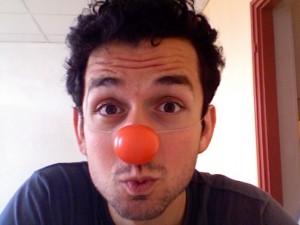 I couldn’t resist.
I couldn’t resist.
The Hulk
The Hulk is an improvisor who is shy and quiet offstage, but when he is onstage, he becomes a rampaging uncontrollable force of comedy, smashing scenes with his unbridled joy. A team of hulks might be awful to watch, but a team with one Hulk and several other improvisors strong enough to play with him would be fun.
Thor
Thor is strong like the Hulk, but less impulsive. He is confident in his choices and capable of big booming characters, but he can also reign it in when necessary. He has a youthful exuberance, and sometimes makes choices that a wiser improvisor would avoid, but his perseverance and fortitude makes even terrible choices work.
Hawkeye
Hawkeye rarely takes center stage. He hangs back, letting the others make most of the initiations. He watches the whole show for an opening to contribute. He not only sees what is going on, but can anticipate what is about to happen. When he does contribute, it’s a precision shot, making the connection that brings the whole show together.
Captain America
The Captain is a soldier, always fearlessly doing what needs to be done. He is often the second person in the scene using Hulk’s crazy choices to make fun scenes. He is the voice of reason dealing with all the chaos being created around him.
Black Widow
With no obvious superpower, there are likely some in the back of the theatre watching the show who don’t understand why Black Widow is part of the team. But then the show starts, and she is fast and smart and makes it look easy to keep up with the boys. For every move, she has a counter move. But more than that, she has a way of bending situations to her advantage. You can’t box her into to stereotypical roles, she has a way breaking free and turning the tables. And watch out when she starts a scene weak, she is about to kick your ass.
Iron Man
Every team needs an Iron Man. Sure, he is smart and clever, but he also has lots of gadgets. No matter what the situation, he has just the right tool to make the scene work. He is the first out to initiate, pointing the way for the rest of the team. He is a great editor, cutting scenes just before they start to wear out their welcome and knows how to bring things together when the show is reaching it’s climax. Finally, he rarely takes things too seriously. When things aren’t going well offstage, he is quick to find the humor in the situation, popping stress balloons with well timed pin pricks of wit.
Who are the Avengers among the improvisors you know?





